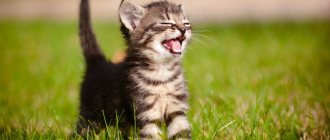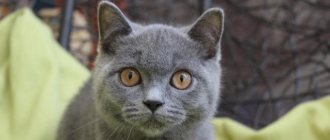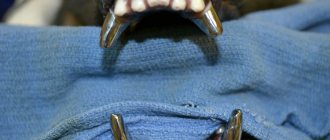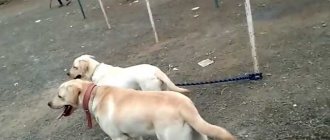If you are caring for a mother cat and her kittens, you should start looking for good homes for them as soon as possible. Once you have suitable device options, an important question arises: When can kittens be separated from their mother as painlessly as possible? Should this be done when they start eating food other than breast milk? Or when they completely stop drinking their mother's milk? Or is there some other reinforced concrete criterion? Many people who want to adopt or purchase a furry friend for their family want to adopt a kitten while it is just a baby, because little kittens are so funny!
According to many members of Cat Clubs, one way to determine a responsible breeder is that a good and loving breeder will not sell a kitten under 12 weeks of age.
Kittens up to a month old
It is strictly not recommended to adopt a kitten that is less than a month old. At this age the pet:
- cannot develop properly without mother's milk;
- needs survival lessons from mom;
- unable to independently understand the environment.
Mother cat, together with breast milk, provides babies with a complete supply of micro- and macroelements necessary for development and strengthening the immune system. No artificial nutrition can be a high-quality replacement for natural food. In addition, kittens that are among brothers and sisters next to their mother receive their first important skills. Before a month, babies do not have time to learn all the necessary lessons. The presence of a cat makes it easier for kittens to get used to the tray and complementary foods.
Proper kitten care
When purchasing a pet, you should take care of all accessories, including a tray, which must match the size of the animal.
In order for the cat to quickly adapt, it would be correct to purchase the following contents in advance:
- Tray. If the baby is less than 5 weeks old, you need a basin with low sides. It is better to choose a regular plastic tray; closed toilets are not suitable for babies. Wood or corn filler is suitable. Silica gel primer contains chemical impurities, so it is not suitable for children.
- Scratching post. When your baby first appears indoors, you should show him where he will sharpen his claws. You need to train it from the first days, otherwise the kitten will damage the furniture. You can make a scratching post yourself from a piece of an old rug and hang it on the wall, decorating it with movable soft pet toys.
- A bowl. You will need 3 of them - for dry and wet food, water. It is better to choose ceramic or plastic. Metallic ones can oxidize food and water.
- Sun lounger. It is better to place month-old babies in a box with woolen fabric on the bed. For older cats, a bed with low sides is suitable. Some cats choose their own resting place, so if it is safe there, you can leave it there.
- Ear and eye hygiene. Particular attention should be paid to the ears of a Scottish cat, since due to the special structure of the ears, dirt accumulates inside and bacteria develop. The baby’s hearing and vision organs are wiped with special animal products “Beafar”, “Trixie”, “Diamond Eyes”.
- Grooming. For delicate fur, a wooden comb with frequent short teeth is suitable. When an animal sheds hair, combs are purchased based on the length and thickness of the fur and undercoat.
The baby is very curious and climbs everywhere, so it is advisable to put protective plugs on the sockets and put the wires out of sight, since the kitten can touch it with its claw and get an electric shock.
Kittens under two months of age
There is no need to rush to take home a baby at the age of 1-2 months. This is not the best time to part with your cat. In the period up to 2 months, kittens acquire important skills. A well-mannered mother teaches her kids:
- use a scratching post rather than upholstered furniture;
- go to the litter box;
- use claws and teeth for their intended purpose;
- eat complementary foods;
- Follow cat hygiene rules.
It may seem that the owners can teach all this. But experts rightfully claim that cats are much better at this upbringing. The kitten learns all these rules without stress and learns them better.
There are also anatomical features that prevent kittens from being weaned at the age of 2 months. At this time, babies are vaccinated to build immunity. But the protective system does not strengthen immediately. This requires 2-3 weeks. The process is faster and better if the kitten is with its mother and receives an additional supply of antibodies with her milk.
How to introduce kittens to solid food?
The process of accustoming a young body to adult food takes a couple of weeks.
As a rule, by the time the baby becomes interested in the contents of the mother's bowl, several teeth have already erupted. The kitten is offered soft cottage cheese, slightly diluted with yogurt or cat milk replacer.
At another feeding they offer meat pate. Gradually, you can replace finely ground food with small and then large pieces.
Breeders feed the cubs 2-3 times a day, taking them away from their mother to another room. The food is distributed into bowls and each kitten's face is lightly dipped into the food.
The process of accustoming a young body to adult food takes a couple of weeks.
Starting to lick his lips, the baby involuntarily eats the first portions of food. The amount of food should not be large, 1 teaspoon is enough.
So that kids don’t get scared in an unfamiliar environment, they communicate with them: they talk affectionately, pet them.
Optimal age: three months
Most experts agree that the best time to wean a cat is three months. There are good reasons for this assertion. By this time, the kitten has developed a strong immune system and has certain skills. Three month old babies:
- have social skills and easily get used to strangers;
- know how to eat solid food and drink independently;
- Carefully lick the fur and wash.
At this age, it is not difficult to instill in a kitten the rules of cat etiquette. Mom has already taught him to go to the litter box, all that remains is to show him where he is. The baby will quickly master the scratching post if the cat has used such a device. An important advantage is the high-quality functioning of the digestive system, which already digests solid food.
By this age, the kitten’s immunity is fully formed. In addition, he has already received the first vaccinations against rhinotracheitis, chlamydia, calcivirosis, rabies, panleukopenia, and has been treated for helminths. Consequently, the new owner will not have problems, and the risk of the baby getting sick is minimal.
How to give away your baby correctly?
A nursing cat has a very developed instinct for preserving offspring, so tearing all the kittens away from her at once is cruel and dangerous to health. It is better if the future owner comes to the house, sometimes picks up the baby and returns it to the mother. So, she will understand that the person does not take away the cub. The kitten also needs to get used to new smells and sensations. Therefore, babies need to be selected gradually in this way:
- They give clothes or an item from the new owner so that the kitten gets used to the foreign smell.
- The future owner should visit the baby regularly so that he gets used to the smell and touch.
- You can take the cat away from its mother for 2-3 hours so that new family members can interact with the pet.
- You should not select offspring if the cat is against it, does not give up the cubs, hisses and growls. It's better to wait a little and try again in a few days.
- When a kitten is given away to a new family for good, it is advisable to take bedding from the old room so that the baby is comfortable and has the smell of his mother nearby.
- When the last kitten is given away, everything that smells of the cubs and reminds of them is gradually taken away from the cat.
Negative psychological factors of early weaning
According to statistics, in 80 cases out of 100, when adopting a kitten before three months of age, minor and medium-sized problems arise. In the remaining 20 babies they had a serious form. More than a third of pets separated from their mother too early acquire the habit of sucking on pillows, soft toys, and blankets. 40% of kittens have an aggressive attitude towards people. Many babies, separated from their mother before 2 months, are too timid, afraid of sounds, strangers, and do not adapt well to a new environment. Such pets often exhibit psychoneurotic dysfunctions.
Up to 3 months, kittens undergo the formation of their main organs and systems; during this period they receive the main lessons from the cat, learn to contact the external environment and people. A pet that has not gone through this important period in a familiar society with its mother, sisters, and brothers often:
- does not comply with the rules of cat hygiene;
- difficult to switch to regular diet;
- He is disobedient and poorly trained in the litter box.
A serious problem is the psychological stress experienced by children who have not undergone social adaptation next to their mother. They are hit by several negative factors at the same time. They are deprived of the guarantees of safety that a cat provides, they are surrounded by foreign objects, smells, sounds, they do not know how to properly explore this area and look for a reliable shelter. No matter how caring the owner is, he will not be able to explain all these wisdom to the kitten the way a mother would.
What to do if the kitten is left without a mother?
Newborn kittens must be kept warm. To imitate the warm side of their mother for them, a heating pad with hot water is placed in the box with the babies. The temperature of the heating pad should be 40 degrees.
Babies are fed from a pipette or a special nipple. Cat milk or its substitute can be purchased at a pet store or veterinary pharmacy. The mixture is heated to a “steamy” temperature (this is +38 degrees) and fed to the babies.
The problem is the frequency of feedings per day. Up to 2 weeks, the cub should eat every 3 hours. From 2 to 4 weeks, the intervals between meals are increased to 4-5 hours. From 5 weeks, kittens are fed 4 times a day.
The care system for a newborn pet looks like this:
- feeding the baby itself;
- massage the tummy and inner thighs to facilitate toileting using gentle circular movements;
- wiping with a damp cloth under the baby's tail.
In the future, artificially raised pets will not differ from ordinary kittens.
Be sure to read:
Puberty in cats: signs, when it occurs, optimal age for mating
Possible health problems
Significant problems can also arise with the health of a pet that is separated from the cat for up to three months. During this period, the most important processes in the formation of organs and systems take place. The presence of breast milk eliminates the deficiency of essential minerals, vitamins, and other microelements. This allows the digestive system to establish the production of enzymes necessary for food processing, gradually, in a normal manner. A kitten that begins to eat regular food before the age of three months may experience various disruptions in the gastrointestinal tract. This often becomes the cause of chronic diseases.
It is known that cats have good health; their bodies cope with many diseases on their own, without medical help. These qualities are ensured by the strong immunity that nature provides to animals. The body of a newborn kitten is practically deprived of this natural defense and cannot produce antibodies to fight pathogenic microbes and bacteria. They come to babies from mother's milk. If kittens are deprived of this source too early, immunity does not have time to form and strengthen. Consequently, a favorable environment is created for the development of infections and inflammations.
Veterinary pharmacology includes vaccinations to strengthen the natural defense system. But they can only be done at 2 months. After this, the kitten remains defenseless against these aggressors for some time; it still requires help in the form of mother's milk. Therefore, babies who were taken before three months often get sick.
Features of newborn kittens
Immediately after birth, the cat releases the babies from the amniotic sac, which allows the kitten to take its first breath. The babies are wet at this time, the mother licks them and later pushes them towards the nipples. Main features of babies:
- Dream. During the first and second weeks, kittens eat and sleep most of their lives. During sleep, the baby may shudder, move his paws, and smack his lips. This indicates the active phase of sleep and is normal. For the first 2 days, cats sleep with their heads tilted towards their chest.
- Weight. Normal full-fledged babies weigh 70-130 g, gradually gaining weight.
- Vision and hearing. Kittens are born blind with closed eyes, which should open in 1-2 weeks. During this period, the cubs begin to hear.
- Touch and smell. Developed because the kitten smells milk, so it approaches the cat’s belly and grabs the nipple.
- Sucking reflex. Very developed. If a kitten is taken away early, the instinct remains for a long time, even when the baby grows into an adult cat and sucks the owner's hand.
- Defecation. The kitten does not yet know how to go to the toilet on its own, so the cat must stimulate the tummy by licking it in the genital area. At 1 month, the baby can already go to the tray on his own, which his mother teaches him to use.
- Leather and wool. Always clean and well-groomed, the skin is light pink and elastic.
- Behavior. The older the kitten gets, the more intensely it moves and shows curiosity, getting out of the box or basket. Therefore, inactive babies may be sick, and in a Scotsman or Briton this indicates osteochondrodysplasia.
What is meant by socialization
All owners expect their pets to be affectionate and obedient. But this requires effort.
In order for the future pet to grow up socialized and completely human-oriented, it is important to take the mustache in your arms immediately after it appears in the family. To train your baby, you need to do this for 15 minutes a day - minimum. In addition, the pet must be stroked, communicated and played with.
The basics of behavior and character traits begin to form in the cub very early. Therefore, the mother cat, and then the owner, must instill in the baby the rules of behavior in the outside world, doing this as affectionately and painlessly as possible.
A socialized cat is one that perceives the voice and distinguishes the intonations of the owner, is not afraid to be handled, plays with pleasure with a person, and is not afraid of guests and noisy companies. All this is ensured by constant communication and conversations.
As soon as the kitten gets comfortable in its new home, it is taught to bathe, clean its ears, and examine its oral cavity. It is important that from an early period of life the baby adequately responds to prohibitory commands and the owner’s dissatisfaction.
Adult cat
Cats do not always end up with new owners at a young age. There are different situations, among which there are also those when both mature and already elderly animals are looking for a home. In such cases, people often think about the problems that they may encounter when taking into their home an adult, fully formed animal with its own habits and outlook on life. We will talk about such difficulties in this chapter.
Finding a common language with an unfamiliar adult cat is a difficult but doable task.
Let’s make a reservation right away: by adults we mean those cats that have already reached one year of age. So, there are two main scenarios in which an adult cat ends up with new owners:
- the animal was found on the street;
- the animal was taken out of breeding and put up for sale by the breeder at a deep discount.
Stray cats
If the background of a stray cat is unknown to you, and, most likely, it has never lived under the same roof with a person before, then you will probably encounter a number of difficulties in trying to domesticate the animal. It is difficult to accustom mature cats to a litter box, scratching post and other household things that these animals have never dealt with and simply cannot rebuild themselves.
Taming a stray cat requires self-discipline and certain skills from a person
Accustoming such cats to the rules of living at home can take a lot of effort, nerves and time. Therefore, it is recommended to take on such a task only if you already have some experience in raising felines. Also, do not forget that stray cats are more predisposed to aggression in order to protect themselves, so expecting such a pet to immediately settle on your lap and purr is pointless.
Before adopting a stray pet, it is important to undergo a full veterinary examination.
It is also important to remember that a stray cat may have hidden illnesses that need to be identified as soon as possible. Therefore, the first thing you need to do after “adopting” such a cat is to take it to the veterinarian and get all the tests done.
Video - How to tame a stray cat?
Cats from catteries
Cats, of course, leave catteries in disproportionately better condition than those from the streets. However, it is important to keep in mind that not all breeders treat their pets humanely and care about their well-being; therefore, “sold” individuals may later develop various health problems, and, in particular, with reproductive systems. This is especially true for females who may have been used for mating too often in order to produce kittens.
Catteries often sell off mature cats that can no longer participate in breeding work.
In order to take a good mature cat from a cattery, you must first study the history of the breeder you are contacting. It is also recommended to visit his nursery and look at the animals in general.
4-5 weeks
The babies have already developed their first teeth, they are trying to walk and even play. If you separate them from their mother cat for a long time, the kittens will begin to squeak, “cry” and worry. The role of the mother is still strong and irreplaceable. The cat washes, licks and feeds its cubs. By the end of the 4th week, it is recommended to give the cat the first worm prevention.
Five-week-old babies are already trying to wash themselves. They can begin to be given the first complementary foods - thus preparing the babies for the “adult” table, where there will be no mother’s milk.
Advice from nutritionists
The number one problem that will require maximum attention is how to feed a weaned kitten. The health and fate of the fluffy depends on the competent actions of the owner. Answers from veterinary nutritionists to frequently asked questions by cat owners will help direct your efforts in the right direction:
- Is it possible to feed a kitten cow's milk? This product will cause digestive upset in your baby. The consequences - diarrhea, dehydration, hypovitaminosis - will not keep you waiting. In the future, an incorrect diet will lead to serious functional pathologies. Therefore, from the age of one month, a newborn pet is offered only a cat's milk substitute, which is sold in veterinary pharmacies and pet stores. A certified product always contains instructions for use developed by nutritionists.
- At what age should kittens be fed food? Meowing companions are introduced to solid food when they can already lap. First, softened food is offered, gradually reducing its moisture content. The transition to a “solid” diet is completed by 2 months of age (at this time the cat stops feeding the cubs milk). The process is accelerated if the transfer of the animal to another owner is scheduled before this period. Food of proper quality will saturate the growing body with the necessary substances and will prevent the four-legged fidget from the bad habit of soaking woolen things.
- Is it possible to feed a kitten cheese? Low-fat varieties of this fermented milk product - storehouses of useful substances - are among the dietary ones and are recommended for mustachioed “babies” as complementary foods from the age of one month. The serving size is determined at the rate of 30 g per 1 kg of weight. A one-month-old pet can enjoy cheese 2 times a week. Later, other low-fat “fermented milk” is gradually introduced into the diet: cottage cheese, yogurt, yogurt, kefir, sour cream.
- Is it possible to feed a kitten baby food? Products for human babies are prepared with cow's milk, so they are not suitable for meowing “artificial babies”. They are given special mixtures adapted to the needs of the cat’s body. This is the best thing you can feed a kitten at 1 month and the first days of life. The frequency of doses and the volume of servings indicated on the package must be carefully observed so as not to overfeed your pets.
- How many times a day should you feed your kitten? The younger the ward, the faster his metabolism and the more often he needs reinforcement. Two-week-old newborns are fed every 3 hours, three-week-olds - 8 times a day. At the age of 1.5 to 2.5 months, the number of meals per day is expected to be at least 6; up to six months - 4; up to 9 months – 3.
Whatever you feed your kitten, monitor its condition.
A bloated belly and a mixture leaking from the nose are signs of improper feeding. Stop eating and after a 5-minute pause, stroke your pet's belly, stimulating belching. Caring for a mustachioed toddler requires taking into account a thousand little things. Decisions on the main issues - how often and what to feed the kitten - are made together with the veterinarian. A serious approach to the matter will provide comfort and peace to the weaned pet. Over time, the baby will turn into a healthy and friendly purring cat.
Pregnancy and birth of a cat – what to expect?
If you are still thinking about the question of whether your cat needs to become a mother, read this section, perhaps it will change your vision. At sexual maturity, each animal begins to obey its instincts to look for a sexual partner. If everything goes well, mating occurs, after which the female bears the offspring for 2 months.
Throughout pregnancy, the cat’s body undergoes changes that affect literally all vital systems. The pet begins to produce more blood, since the body also provides embryos. Kittens develop quickly, which leads to increased consumption of proteins, carbohydrates and all nutrients.
Question answer
The cat pushes the kittens away and does not allow them to suckle
This is observed if a nursing female has problems with the mammary gland, or when the mother cat herself decided to wean her offspring from breastfeeding. It is necessary to examine the cat's mammary glands. If there are no signs of disease, and the kittens are still not allowed to breastfeed, you should somewhat speed up the process of switching to solid food. It is necessary to ensure that the cat does not injure the kittens in the process of driving them away. It is better to seat them in different sleeping places yourself.
The cause may be a foreign smell from kittens. If babies are often held in your arms, have been stroked by hands after washing with strong-smelling soap, or their fur has absorbed the smell of perfume when cuddling them to the chest, the cat will not let them near you. It is necessary to put the kittens in their usual sleeping place so that they are “saturated” with the usual cat smell and everything will fall into place.
If kittens stop eating solid food after weaning
Perhaps this is how post-weaning stress manifests itself. It is necessary to be patient when starting to feed the kittens again with milk (from a syringe or saucer yourself), starting to introduce complementary foods with minimal portions.
The cat is looking for kittens after weaning and distribution
Weaning doesn't just take its toll on the kittens—cats are also stressed about losing their babies. Ideally, a cat is always left with one kitten until lactation completely subsides. If this is not possible, you can try two options - placing a toy in the sleeping area or distracting the cat at the moment when she begins to walk around the house and meow, clearly inviting her babies (give a treat, play, pick up, stroke, let out). and so on.). It takes time and patience from the owners until the cat gets used to being alone.
It is also advisable to replace the bedding in the sleeping box and move (or completely remove) it to another place.
After the kittens were weaned, feces began to be found everywhere.
While the babies are small and feed only on milk, the mother cat licks their tummy after eating, doing a kind of massage and licking the excreted primary feces and urine. Obviously, after switching to adult food, kittens' feces become more and more formed and look like adults. The cat no longer eats it. The period begins when kittens are trained to use the tray. If after some time you put the babies in the tray and wait for them to do their “natural” business, the feces will no longer be detected.











